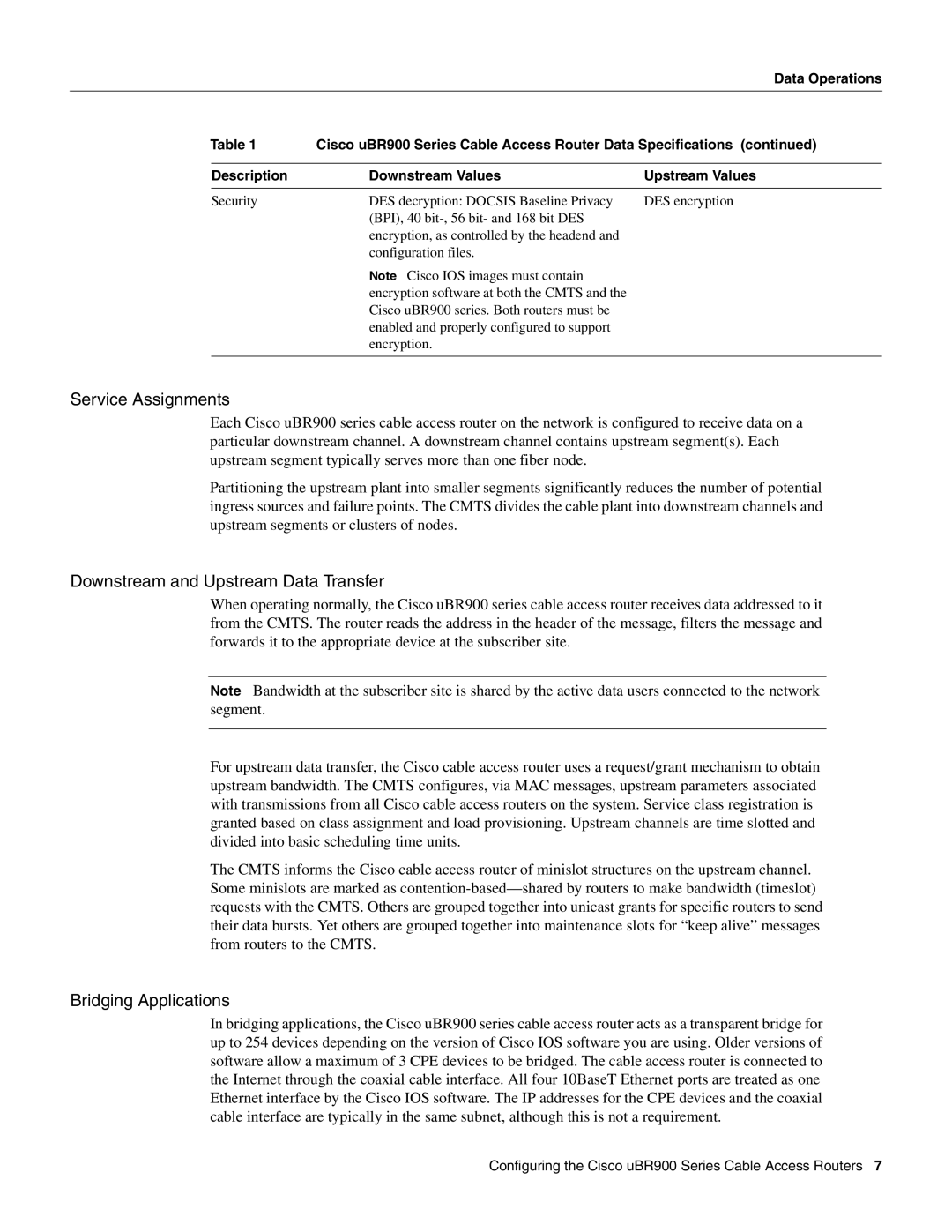
|
|
| Data Operations |
Table 1 | Cisco uBR900 Series Cable Access Router Data Specifications (continued) | ||
|
|
|
|
| Description | Downstream Values | Upstream Values |
|
|
|
|
| Security | DES decryption: DOCSIS Baseline Privacy | DES encryption |
(BPI), 40
Note Cisco IOS images must contain encryption software at both the CMTS and the Cisco uBR900 series. Both routers must be enabled and properly configured to support encryption.
Service Assignments
Each Cisco uBR900 series cable access router on the network is configured to receive data on a particular downstream channel. A downstream channel contains upstream segment(s). Each upstream segment typically serves more than one fiber node.
Partitioning the upstream plant into smaller segments significantly reduces the number of potential ingress sources and failure points. The CMTS divides the cable plant into downstream channels and upstream segments or clusters of nodes.
Downstream and Upstream Data Transfer
When operating normally, the Cisco uBR900 series cable access router receives data addressed to it from the CMTS. The router reads the address in the header of the message, filters the message and forwards it to the appropriate device at the subscriber site.
Note Bandwidth at the subscriber site is shared by the active data users connected to the network segment.
For upstream data transfer, the Cisco cable access router uses a request/grant mechanism to obtain upstream bandwidth. The CMTS configures, via MAC messages, upstream parameters associated with transmissions from all Cisco cable access routers on the system. Service class registration is granted based on class assignment and load provisioning. Upstream channels are time slotted and divided into basic scheduling time units.
The CMTS informs the Cisco cable access router of minislot structures on the upstream channel. Some minislots are marked as
Bridging Applications
In bridging applications, the Cisco uBR900 series cable access router acts as a transparent bridge for up to 254 devices depending on the version of Cisco IOS software you are using. Older versions of software allow a maximum of 3 CPE devices to be bridged. The cable access router is connected to the Internet through the coaxial cable interface. All four 10BaseT Ethernet ports are treated as one Ethernet interface by the Cisco IOS software. The IP addresses for the CPE devices and the coaxial cable interface are typically in the same subnet, although this is not a requirement.
Configuring the Cisco uBR900 Series Cable Access Routers 7
